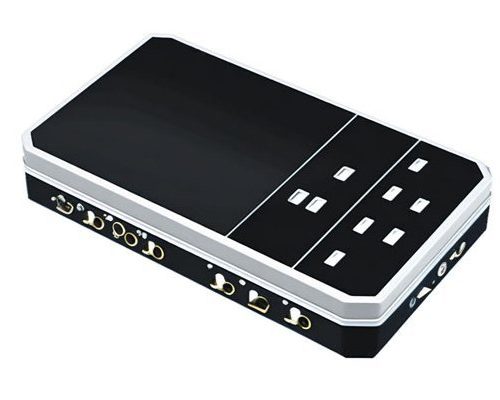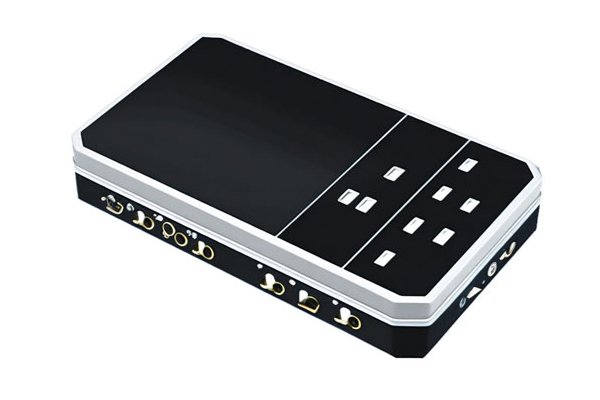Welcome to the world of CNC machining! You might be thinking, “What exactly does that mean, and why should I care?” Well, if you’ve ever marveled at a perfectly crafted part or an intricate design on a gadget, then you’ve already witnessed the magic of CNC (Computer Numerical Control) machining.
Picture yourself in a workshop surrounded by the rhythmic hum of machines, each programmed to create masterpieces out of raw materials. It’s like a symphony, where every note and beat is precisely orchestrated to turn your visions into reality. In this article, we are going to explore a myriad of fascinating aspects of CNC machining, including the options available online, the platforms you might want to consider, and the intricate monsters known as CNC parts. So, grab your favorite beverage, and let’s embark on this journey together!
What is CNC Machining? An Overview
To kick things off, let’s decode the acronym itself. CNC stands for “Computer Numerical Control.” Essentially, it’s a method of manufacturing that utilizes computer software to control machine tools. What does that mean? Well, imagine a talented craftsman shaping materials with their hands. Now, replace the hands with machines that can cut, carve, and mold materials with pinpoint precision, all guided by a computer program that operates like a GPS for the manufacturing process.
CNC machining has become a cornerstone in various industries, from aerospace to automotive, medical devices to consumer goods. It’s the reason why we can trust the quality and uniformity in the products we use daily. Doesn’t that just blow your mind?
How Does CNC Machining Work? Breaking it Down
Now that we understand what CNC machining is, let’s dive into how it actually works. There are several steps involved, and we’ll break them down into digestible bits.
Design Phase: Transforming Vision into Virtual Reality
Everything starts with an idea, right? Designers and engineers create what’s known as a Computer-Aided Design (CAD) file, which serves as the blueprint for the part or assembly. It’s like sketching a dream car or designing futuristic furniture—exciting, isn’t it?
Converting CAD to G-code
Once the design is complete, it’s translated into a language the CNC machine can understand—G-code. This step is vital as the CNC machine needs specific instructions on how to move, where to cut, and what speed to operate. Think of it as translating your favorite recipe into a language a robot chef understands.
Setup and Machining
With G-code in hand, it’s time to set up the CNC machine. This involves securing the workpiece and calibrating the machine for optimal performance. Now comes the thrilling part: the machine starts to cut and shape the material according to the provided instructions. It’s akin to watching a delicate dance as the tool moves gracefully, following a choreographed routine to bring the designed piece to life.
Quality Control
Finally, once machining is underway, it’s crucial to monitor and inspect the outputs. This ensures each piece meets the required specifications and tolerances. Think of it as the final checks on a roller coaster—safety is paramount!
Exploring CNC Machining Platforms: Your Gateway to Efficiency
Now that we’ve covered the basics, let’s delve into the platforms available for CNC machining. In this digital age, online CNC machining platforms have revolutionized the way we approach manufacturing. You might be wondering, “What are the best platforms available, and how do I choose one?” Don’t fret! We’re here to help.
Understanding Online CNC Machining Platforms
These platforms serve as intermediaries between customers and manufacturers. They streamline the process by allowing users to upload designs, receive quotes, and even place orders, all from the comfort of their home or office. It’s like ordering a custom pizza—just with a lot more precision and a lot less cheese!
Key Features to Look For
When searching for the right CNC machining platform, certain features can make or break your experience:
Popular CNC Machining Platforms
While there are many platforms to explore, here are a few of the frontrunners that may catch your interest:
Each of these platforms fills a unique niche, catering to different needs in the manufacturing ecosystem.
Diving into CNC Parts Machining: The Heart of the Process
Now, let’s take a closer look at CNC parts machining and why it’s the heartbeat of CNC manufacturing. You might think of CNC parts as the puzzle pieces that come together to create an entire picture. Each piece needs to fit perfectly, or the whole thing could fall apart!
Types of CNC Machined Parts
CNC machining can produce a wide variety of parts, depending on your project’s requirements. Here are a few common types:
Materials Used in CNC Parts Machining
The choice of material can greatly affect the final product. Here are some popular materials commonly used in CNC machining:
When deciding on a material, consider the specific application and the mechanical properties required. It’s like choosing the right ingredients for a cake—you want them to complement each other beautifully!
The Importance of Tolerances in CNC Machining
Tolerances define how much a part can deviate from its intended dimensions. Tight tolerances ensure high precision, especially in applications like aerospace. Think of it this way: if you’re building a bridge, you want every bolt and beam to fit just right to ensure safety. The same principle applies to CNC machined parts!
Challenges in CNC Machining: What to Watch Out For
While CNC machining can be incredibly efficient, it’s not without its challenges. Awareness can help you avoid potential pitfalls and ensure smooth sailing.
Machine Calibration
If your CNC machine isn’t calibrated correctly, it can lead to a domino effect of errors. Regular calibration routines are essential to maintain accuracy. It’s like tuning a musical instrument; even a slight miscalibration can result in a cacophony instead of a symphony!
Material Cost and Availability
Certain materials can be expensive or subject to shortages, affecting your project’s budget and timeline. Keeping an eye on market trends is crucial—be the savvy shopper of materials!
Software Issues
Just like any tech, CNC software can sometimes malfunction or become outdated. Staying up-to-date with software updates ensures things run smoothly. Think of it as regularly updating your smartphone to enjoy the latest features.
Future Trends in CNC Machining: What Lies Ahead?
As technology advances, so does the world of CNC machining. Here are some trends reshaping the landscape as we move forward.
Automation and AI Integration
The marriage of CNC machining with Artificial Intelligence (AI) is blossoming. AI can predict maintenance needs, optimize machining operations, and even enhance design processes. Imagine having a smart assistant constantly ready to improve your efficiency!
Eco-Friendly Practices
Sustainability is no longer just a buzzword; it’s a necessity. CNC machining is evolving to incorporate eco-friendly practices, from sourcing materials to reducing waste. It’s like going green in your kitchen—every little change matters!
Customization and Flexibility
The need for customized solutions is growing. As customers demand more personalized products, CNC machining will continue to adapt, offering greater flexibility without sacrificing quality.
3D Printing Convergence
The merger between CNC machining and 3D printing is exciting, blending the best of both worlds. Imagine being able to print a prototype and then using CNC machining for precise final touches—talk about the ultimate power couple!
Conclusion: Your CNC Machining Journey Awaits!
Congratulations! You’ve made it to the end of this journey through the fascinating world of CNC machining. Whether you’re looking to dive into design, explore platforms, or understand the nitty-gritty of parts machining, there’s always something new to learn and discover.
Remember, CNC machining is like a beautiful dance—a choreography of design, precision, and creativity combining to bring ideas to life. So, what are you waiting for? Dive into this world, explore, and let your imagination soar. After all, the next brilliant innovation could be just a CNC machine away. Cheers to your CNC adventures!


